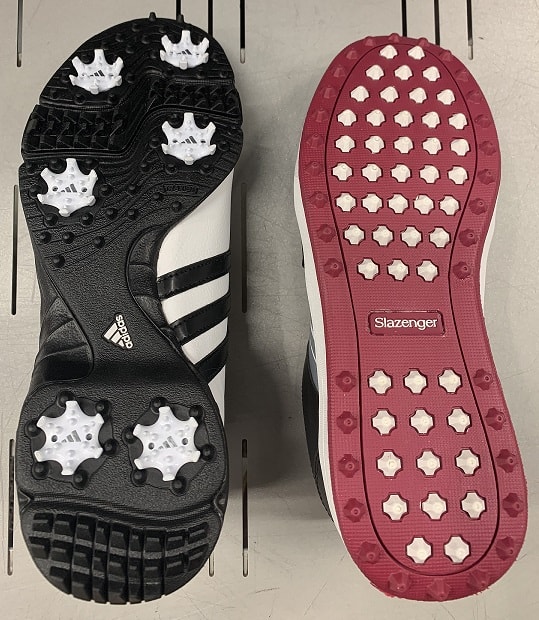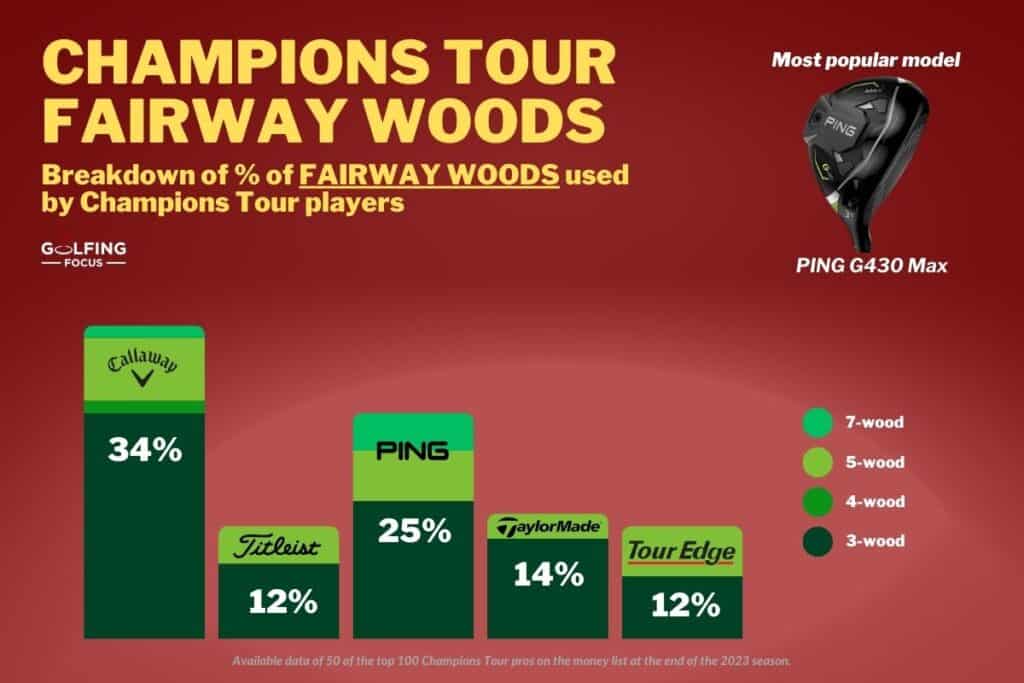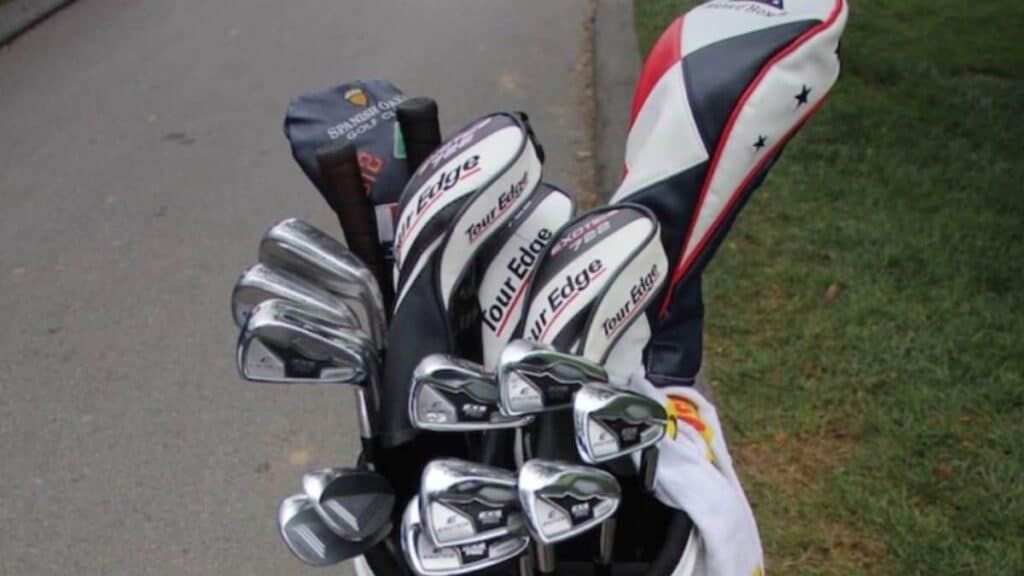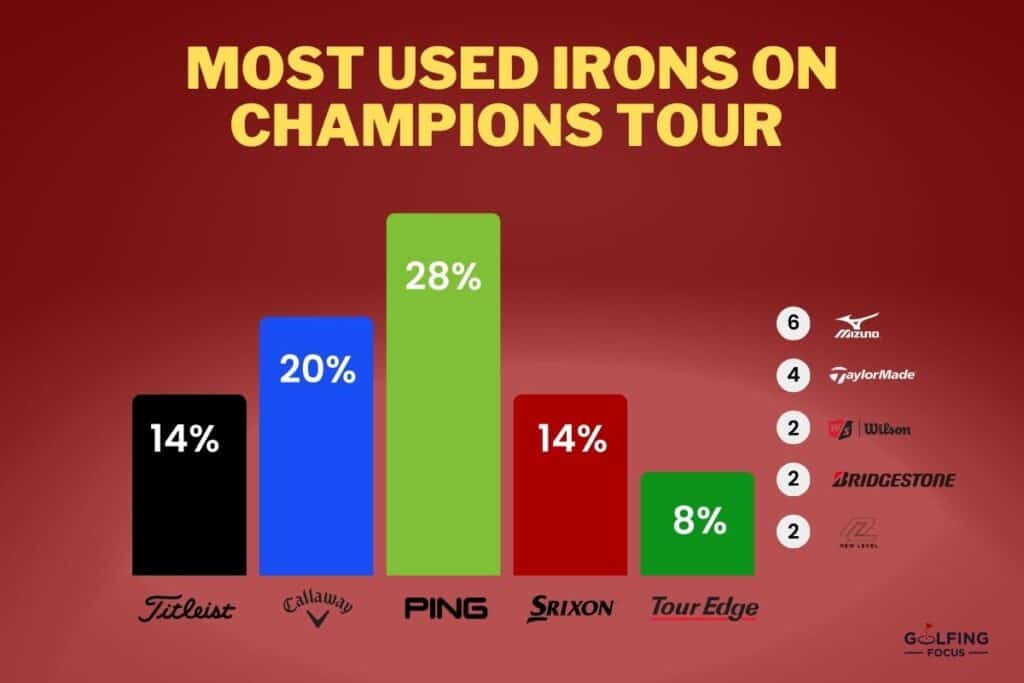The 5 Best Tips for Beginner Golfers Follow the KIS Principle

I wasn’t until a couple of years ago when I started trying to teach a friend of mine how to play golf that I realised how complicated a game, golf can seem to a beginner.
I’ve been playing almost all my life and because of that I clearly take a huge amount for granted.
So as I started researching how best to help him learn the game I not only found out how complex and intimidating the game can seem to newcomers but also how bewildering some of the advice for beginner golfers is.
Not only that but there is a huge amount of it so new golfers are easily susceptible to information overload.
In one of the advice articles I read I found myself wading through 76 (that’s right seventy-six) “easy and simple” tips for beginner golfers.
I don’t know about you but I struggle to remember 76 facts about my life in total never mind 76 things I should be thinking about every time I play golf.
So based on my experience of this great game of golf here are my 5 best tips for beginner golfers all of which all based on one principle only – The Keep It Simple (KIS) principle.
Quick links
- Beginners Should Save Their Money to Start With
- Focus on Having a Good Grip With Your Hands & Feet
- Practice Getting Into the Swing of Your Routines
- Start With Pitching and Putting to Build Momentum
- Buddy Up And Have Some Fun
Beginners Should Save Their Money to Start With
Golf can be an expensive game. Before you have even hit a golf ball you can spend hundreds and even thousands of dollars, euros or pounds.
Not only can you rack up the bills buying golf clubs, golf balls, golf bags, golf shoes, golf towels and a nice big golfing umbrella but there’s also potentially a whole new wardrobe to buy to make sure you are wearing the right clothes when golfing.
And that is all before you have spent any money on golf course or driving range fees to actually get you onto a venue where you can play golf.
While I am a huge advocate of the game golf is undoubtedly a hard game to play consistently well and it will take a lot of time and practice.
As a result, I could never argue that it is a good idea for any beginner golfer to rush out a spend a lot of money on equipment and golf clothing before they have had a chance to have a go at the game first to see if it is for them and worth some more investment.
Cool fact: 5-time Major Championship winner Seve Ballesteros started playing golf on the beaches near his family’s home with only the 3-iron given to him by his oldest brother Manuel.
Daily Telegraph
The good news is there are lots of ways for beginner golfers to save their money to start with as they get to know the game and work out how much they enjoy it and want to keep playing.
So here are a few top tips on how beginner golfers can save their money as they get started playing:
- Start with a small set of second-hand clubs – To begin with there is no need to buy the latest and greatest golf clubs. All you need is one or two second-hand golf clubs to get started. And go for clubs with a lot of loft – wedges or high numbered irons like 9, 8 or 7 irons – to start with for the simple reason that the more loft a club has the easier it will be to hit in the air. If they are irons with wider soles (the bottom part of the iron) and cavity backs all the better as these types of clubs are the easiest to hit. And when I say second hand that doesn’t mean you have to buy them either. If any of your friends are golfers ask them whether they would be happy to lend you one or two of their clubs to let you get started practicing or even if they have some old clubs they would be happy to give you. If they have a wooden head or shaft though they are probably too old! If none of your friends play golf have a look online and you will be able to get a couple of second-hand clubs for a small amount.
- Head to the driving range first – The easiest and safest place to start hitting a few balls is at a golf driving range. All you will need to pay for is a few driving range balls which will typically only cost a few dollars, euros or pounds and you can start hitting straight away. The good news about driving ranges also is that you don’t have to pick up any of the golf balls you hit and you can just swing away and see how you get on. Some great golfers of the past have also not even needed a driving range to get started. One of the greatest players of all time – Seve Ballesteros – started playing on his local beach with a 3-iron given to him by his brother. Or if you have a few golf balls of your own you could start at a local field. Just make sure they are deserted with though so you don’t hit anybody. And remember, unlike the driving range, you will have to collect your golf balls after you hit them which when you start can mean heading in a few different directions! The great thing also about the driving range is you don’t have to worry about what to wear or what the rules for playing on a golf course are. You can wear your normal clothes – loose-fitting is best so you are not restricted when you swing the club – and as long as you’ve got some good grip with your shoes you are good to go.
- Look out for free beginner lessons – Every beginner golfer will typically be told to take lessons to begin with. These can be a great idea but they are certainly not compulsory and not necessarily for everyone. YouTube is a great source of golf instruction in itself these days. The good news though, for those of you who like to get professional lessons in person when you learn something new, is that there are typically very good deals for beginner lessons. A series of 60-minute beginner group lessons, which can include as many 12-15 people, can cost from around £5-12 in the UK while in the USA the cost will typically be between $20-25. Many professionals and instructors will also offer a free or cheaper introductory / trial lessons so take advantage of these offers as part of your search to find the best coach for you and save some money as you start to learn the game.
Once you get going and decide you want to commit some more time and money to the game you can always upgrade your clubs, buy some new equipment, start paying to get onto a golf course and paying for a series of lessons.
But until that point save your money to begin with and just have a go until you decide golf is the game for you.
Focus on Having a Good Grip With Your Hands & Feet
Whether you are a beginner or a professional golfer ‘grip’ is the important basic element you have to think about and always focus on.
And when we talk about ‘grip’ we are talking about both your grip of the golf club with your hands and also the grip you have on the ground with your shoes.
You will not be able to swing the club properly if you have a poor grip with either.
It’s that simple.
So working on making sure you have a good grip with both is vital for all beginner golfers.
To start gripping the golf club, and assuming you are right-handed, start gripping the club with your left hand by placing the top of the club along the pad of your fingers.
Then close the fingers of your left hand around the club.
After that take your right hand, and again with the pad of your fingers wrap that hand around the club.
You can then finally choose whether to overlap your right pinky finger on top of your left pinky finger or interlock them together.
If you are left-handed of course you would do this the other way round.
Working on your grip is something you will do throughout your golfing career and the good news is it’s easy to work on all the time.
You don’t need to be on the golf course to practice how you put your hands on the golf club and can keep getting more used to how the club feels in your hands from the comfort of your own home.
And always remember don’t strangle the club!
It’s not an enemy to be strangled. Simply apply a nice even pressure on the club.
Keeping your footing as you swing the club is the other key element to ‘grip’ in golf.
If you are slipping and sliding all over the place as you turn your body you will have very little chance to hit a good shot.
Golf shoes are obviously specifically designed with soft spikes or treads to give players a grip as they swing but in the spirit of our top tip 1 above, if you do not have any, we would recommend holding off on buying a pair until you have decided you want to spend more time and money on the game.

The key thing is simply to wear shoes which will give you a good grip on the ground as you swing.
Trainers or sneakers with a decent tread on them will do fine to start with.
Practice Getting Into the Swing of Your Routines
Like any other sport golf takes a lot of practice and repetition to play consistently well.
On that basis it is important all beginner golfers from the outset start to establish the basic routines that they need to continue with every time they play golf.
With routine comes consistency and a straight forward approach to the game which keeps the mind from clogging up with too much information.
So from warming up through to actually hitting the golf ball beginner golfers should come up with a simple set of routines which they can easily follow each time they play.
- Warm-up routine – Although it may not seem a particularly physical sport the golf swing forces you to use at least 17 different muscles groups in the body. Flexible and strong, upper and lower body, muscles are needed so it is important all golfers, and not just beginners, warm up before they hit a golf ball. If you simply arrive at the driving range and start hitting golf balls right away you are unlikely to hit the ball very well. The most important areas to focus your warm-up on are the hips, glutes and neck / upper spine so make sure you create a stretching routine from the start which focuses on them so they are prepared for making a series of golf swings. Only then move on to completing your warm-up by hitting one of your wedges or short irons with short swings before you gradually increase the length and speed of your swings.
- Pre-shot routine – The next important routine to start working on is the pre-shot routine. Golf provides its players with an almost unique opportunity in sport to rehearse what they are about to do. So it will serve you in great stead if you start your golfing career by creating your own pre-shot routine from the beginning which includes a practice swing or two and a good set up. As six-time Major Champion, Sir Nick Faldo, explains in the video clip below the mind doesn’t know the difference between a rehearsal and the real thing. So if you imagine yourself hitting a good shot as part of your consistent pre-shot routine the chances are higher that you will a good shot in reality!
- Swing and tempo routine – Golf can seem ridiculously complicated to the beginner and that complexity is never more evident when it comes to the golf swing itself. All sorts of words and jargon are used – takeaway, pivot, transition, backswing, downswing, torque, flying elbows, lateral hip movement etc etc. For a beginner, the unnatural movement that is the golf swing can seem as complicated as astrophysics. The key to start with therefore is to keep things simple and only focus on one thing – the tempo (or pace) of your golf swing. Some players recommend counting to 3 during your swing – with the count to one and two taking you to the point where you’ve completed your backswing and the 3 as you bring the club down to hit the ball. Others simply say the words “turn, turn” with the first turn said as you make your backswing and the second turn said as you make unwind the first turn on your downswing. Or simply watch some videos of your favourite player and only think about mimicking their swing. Whatever method you chose just focus on thinking about the tempo and the smoothness of your swing to start with. It will serve you well for however long you decide to play golf.
Start With Pitching and Putting to Build Momentum
A core fundamental of the game of golf is something called ‘the short game’. And this comprises pitching (also called chipping) and putting.
Approximately half the strokes any golfer will take in any round of golf will be within 50-75 yards of the green and involve pitching and putting so it makes sense that any beginner should start their initial learning efforts by focusing on this key part of the game.
The good news also for all beginners is that pitching and putting involve the shortest shots in the game so it is a great place to start to build some confidence hitting the ball.
An additional piece of good news is that you can practice your pitching and putting from the comfort and privacy of your own home.
All you need is a piece of carpet to practice your putting and a back yard or garden to practice your pitching.
The putting stroke resembles a pendulum – back and forth – and is the same irrespective of how long a putt is.
The best way to achieve this pendulum swing is to keep your shoulders level so whenever the carpet coast is clear grab a ball or two and practice rolling balls into furniture legs or upturned drinking glasses.
The back yard/garden is a great place also to put out some buckets and try to pitch golf balls with your wedge into them.
Just make sure there’s nobody about you can hit obviously but it won’t take long before your skills improve and you begin to form a great base for your golf game.
If not stick to the driving range but keep focusing on that short game to begin with.
For all beginners there is a huge temptation to rush to try to see how quickly you can start launching golf balls far into the distance.
We all get it.
Since the dawn of time people have enjoyed watching things fly and the desire to send and watch a golf ball flying into the distance is a strong one.
But as any golfer who has played golf for any length of time will admit there will be some bad days when your confidence takes a hit and confidence plays a key role in golf.
By starting with the short game you will give yourself a chance and some time to build some positive momentum.
It may sound boring but if you take your time to build up your game from pitching and putting you will save time and a whole lot of frustration.
You will also build a much stronger base from which to develop your game. Continue this ‘building’ process as you start to get better.
Once you feel ready to take on a golf course think about starting with a par 3 course. Don’t head to a Championship course straight away.
And if the first course you play on is flat, short and doesn’t have many bunkers or much water that is even better.
Believe me there will be plenty of time to test yourself on tougher courses so take your time as you get going.
Golf can never be mastered no matter how long you play or how good you get so there’s no point in rushing past the basics.
Buddy Up And Have Some Fun
When you take any new hobby the main purpose should always be to enjoy it and have some fun.
And golf is no different.
Although a lot of seasoned golfing veterans will probably shake their head if a beginner asked them if they enjoy the game golf is genuinely a fun game to play for a number of reasons.
And one of the main ones is that golf truly is for anyone. Golf does not discriminate in terms of age or gender.
Players can be as young as 2 and as old as 92.
It is a hugely sociable game and one I have been lucky enough to make lifelong friendships through with different people from all over the world.
You can have great fun over a lifetime playing the game and catching up over a few hours with your oldest and dearest friends or you can enjoy the game with people you have just met.
“There are many ways to play golf. It does not necessarily have to be Pinehurst or Augusta or St.Andrews, you can build your own golf course by using your imagination that’s all. Simple as that.”
Seve Ballesteros, 5-time Major Golf Champion.
So when you get started why not recruit a friend or family member to learn with you and make it something you enjoy together.
You don’t even have to drive to a golf course to play. You can build a mini golf course right in your backyard or set up an indoor golf simulator if you want to stay out of the sun. With a home setup, it would be easy to play, learn, and bond with your loved ones.
[Editor’s note – For golf simulators you can easily set up in the comfort of your own home check out these great options at Rain or Shine Golf]
Golf is one of the very few sports where all generations of a family can play and enjoy it together at the same time so why not start learning alongside your son or daughter or even grandson or granddaughter.
Or if there’s is nobody you know who wants to start playing at the moment then think about heading along to the cheap group lessons at the local driving range we mentioned earlier.
There you will find a ready-made group of people all starting out to learn golf at exactly the same place as you – the very beginning.
Lasting friendships can be started and grow right at the driving range.
It always helps to have a buddy when you are starting something new, whether it’s a new fitness regime or a new job.
And exactly the same holds true when starting to learn a new sporting hobby like golf.
Final Thought
We do get it. Golf can seem a terribly complicated game to the beginner.
An unnatural swing to learn, some many different types of clubs, so make rules. And then there’s all the terminology to get to grips with – birdies, eagles, bogies, snap hooks, slices, mulligans, bump-and-runs, sand saves, up and downs etc etc.
There is a huge amount of information out there about golf and it is an easy game to quickly get in a mental muddle about.
There is a constant risk of information overload and overthinking. And overthinking creates tension and stress which always leads to poorer golf.
So when you get started to play golf our advice is always the same – just Keep It Simple!
[Note – Just so you know, and we are upfront as an affiliate program participant, Golfing Focus, at no cost to you, earns from qualifying purchases made through links on this page.]
More great articles related to this topic:
- How Long Does a Round of Golf Take – for 1, 2, 3 & 4 Players?
- How Many Clubs Does a Beginner Need? Save Your Money to Start With!
- Should Beginners & High Handicappers Use a Driver? Yes & Yes
- Going the Distance? How Far Should Beginners Hit A Golf Ball?
- How Much Do Golf Clubs Cost? A Giant Guide With 32 Examples
- Are Golf Shoes Worth It? Just Make Sure You’ve Got a Grip!
- How Much Should You Pay for Golf Lessons? A Complete Guide
- How Many Golf Lessons Do You Need? 3 is the Magic Number
- What Should You Wear Golfing? Do’s and Don’ts for Men & Women
RECENT ARTICLES
LEGAL INFORMATION
This site is owned and operated by Golfing Focus Limited, a private limited company whose registered office is in London, UK. Golfing Focus Limited is a participant in the Amazon Services LLC Associates Program, an affiliate advertising program designed to provide a means for sites to earn advertising fees (at no cost to you) by linking to Amazon.com. Golfing Focus Limited also participates in other affiliate programs with the eBay Partner Network, FlexOffers, CJ.com, Svorn and other sites and is compensated for referring traffic and business to these companies (again at no cost to you).
Our Socials






Leave a Reply